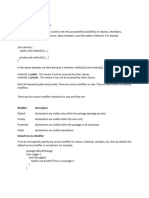0% found this document useful (0 votes)
25 views3 pagesCloud Computing QA
Cloud computing is crucial for modern businesses due to cost savings, scalability, and improved collaboration. It encompasses various types such as public, private, and hybrid clouds, and operates on service models like IaaS, PaaS, and SaaS. Key trends include multi-cloud adoption and AI integration, while technologies like virtualization and cloud architecture play significant roles in optimizing resources and ensuring security.
Uploaded by
s79871095Copyright
© © All Rights Reserved
We take content rights seriously. If you suspect this is your content, claim it here.
Available Formats
Download as DOCX, PDF, TXT or read online on Scribd
0% found this document useful (0 votes)
25 views3 pagesCloud Computing QA
Cloud computing is crucial for modern businesses due to cost savings, scalability, and improved collaboration. It encompasses various types such as public, private, and hybrid clouds, and operates on service models like IaaS, PaaS, and SaaS. Key trends include multi-cloud adoption and AI integration, while technologies like virtualization and cloud architecture play significant roles in optimizing resources and ensuring security.
Uploaded by
s79871095Copyright
© © All Rights Reserved
We take content rights seriously. If you suspect this is your content, claim it here.
Available Formats
Download as DOCX, PDF, TXT or read online on Scribd
/ 3























































































